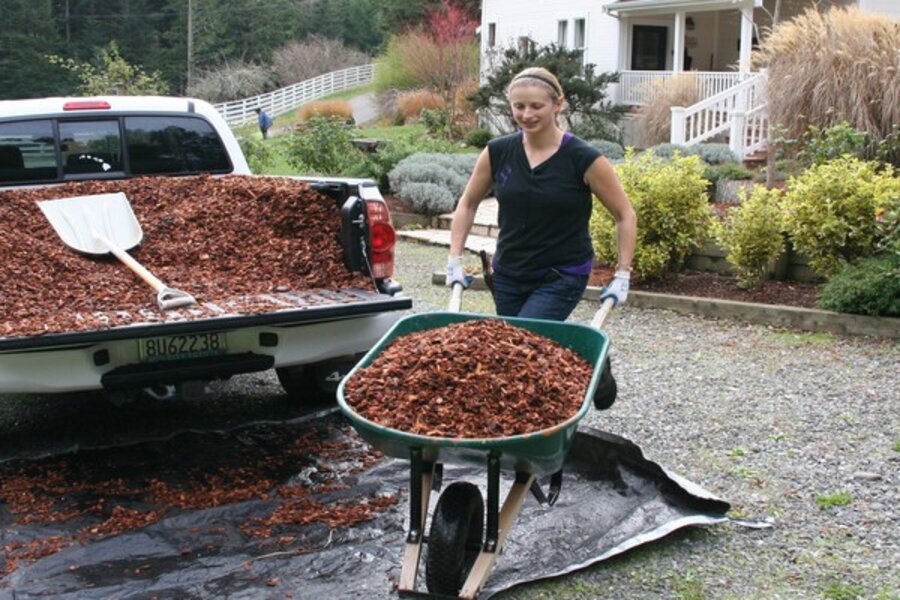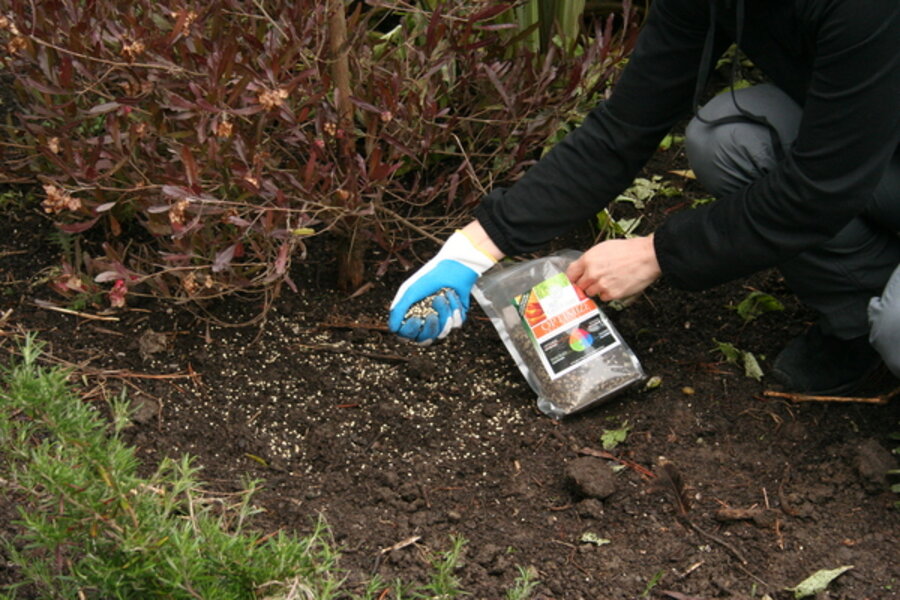Winter soil care
Loading...
For those of us in mild climate (I'm in Northern California), garden care doesn’t come to a stop in December. In fact, this is one of the busiest times of the year, because the work we do now sets the stage for a good growing season come spring.
While we’re used to poring over bulb catalogs, planting shrubs, and gearing up for winter pruning, we often neglect the most important part of our gardens -- our soil. Yet there are a number of things we can do for our soil right now to improve how well our plants grow in the coming year.
Add dolomitic lime to rhododendrons
While it may seem counter-intuitive to give dolomitic lime to an acid-loving shrub, studies have shown that it improves health and vigor dramatically. According to Don Wallace of Singing Tree Gardens rhododendron nursery, rhododendron leaves are primarily composed of magnesium, and dolomitic lime is calcium and magnesium carbonate.
Sprinkling this inexpensive amendment around the drip line of your rhododendron each fall or winter turns the leaves a deeper, richer shade of green, and the minor effect on soil pH isn’t usually a problem in the naturally acidic gardens west of the Cascades. On each rhododendron, use a half cup per foot of height, once a year. Camellias and azaleas also benefit from this treatment.
Top dress your lawn with compost
Each year, I try to top dress my lawn with compost. It helps the soil absorb rainfall and irrigation water, adds nutrients that plants need, and encourages earthworms to aerate the soil. It has the added side effect of discouraging weeds, because when lawn grass is healthy, it is better able to out-compete weeds and grow thick and lush.
Top dressing is simple: First mow your lawn. Then rake one-half to one inch of compost over the entirety of your lawn (if your lawn is large, focus on the areas closest to your home). You can use bagged compost on small lawns, or get bulk compost delivered from your local nursery or municipality.
Add soil conditioner
For years, I’ve been hearing from other local landscapers about the benefits of John and Bob’s soil conditioners. Clients with horrible clay, landscape fabric, and other difficult conditions are growing plants that they have no business growing. Their special magic? John and Bob’s. This soil optimizer is a blend of minerals and humus, which helps the beneficial microbes in your soil thrive, and leads to better disease-resistance and nutrient uptake.
I wouldn’t have believed the hype, but I’ve seen the results in person. My very own lemon tree was near death after being scratched at and pestered one too many times by my energetic chickens. One application of John and Bob’s (and some chicken barriers erected), and two weeks later it had greened up fully and sprouted some happy new leaves.
Mulch, mulch, mulch
Winter rains can compact soil and form a water-repelling crust. A thick layer of wood chip mulch forms a barrier between the beating rains and your soil, and, in addition, may well be the most effective way available of preventing weeds and reducing water use in gardens. Use a 3-inch-thick layer for best results. If you’re on a budget, contact local tree-trimming companies and ask if you can pick up any chips from their recent jobs.
What not to do now
- To protect your soil in winter, never walk on or dig in soggy soil. If you’d like to work in your garden, give it at least one day after a rain before walking on or working in the soil.
- And don’t fertilize dormant or perennial plants in winter. The last thing you want to do is encourage them to grow too soon and get zapped by the frost.
-----
Genevieve Schmidt is a landscape designer and garden writer in the redwoods of Northern California who often writes here at Diggin' It. She also shares her professional tips for gardening in the Pacific Northwest at the website North Coast Gardening and on Twitter.








